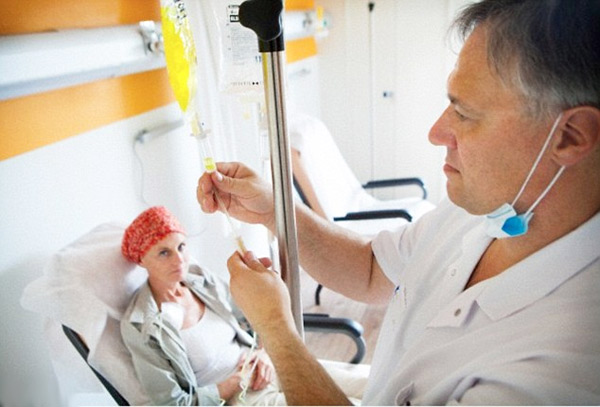
Tumors can leverage glucose and another nutrient, acetate, to resist targeted therapies directed at specific cellular molecules, according to Ludwig Cancer Research scientists studying glioblastoma, a deadly brain cancer.
The findings, published in the July 13 Proceedings of the National Academy of Sciences, demonstrate that nutrients can strongly affect the signaling molecules that drive tumors. “This study shows that metabolic and nutritional factors might be quite important in cancer development and treatment,” says Ludwig San Diego member Paul Mischel, the lead author of the study, and Professor of Pathology at the University of California, San Diego.
The study also highlights one way that tumors can evade targeted drugs such as erlotinib and gefitinib, inhibitors of a mutant form of the cellular molecule EGFR (epidermal growth factor receptor) that drives the growth of many glioblastomas and other tumor types.
Cancer researchers have known for years that tumors have unusual metabolisms — their rapid use of glucose is used as a diagnostic tool for tumors in PET scans. But only recently have scientists begun to flesh out the details of this metabolic shift. Mischel and other researchers have previously shown that this shift can occur through the activation of a central cellular signal, mTORC2 (mTOR complex 2). mTORC2 is involved in switching cancer cells to a hyperactive metabolic state, for instance prompting the increased influx of glucose and acetate into cancer cells. Glucose and acetate provide fuel and cellular building blocks to perpetuate the rapid growth of tumors.
In the new study, Mischel and his colleagues, including Ludwig postdoctoral fellow Kenta Masui, now an independent researcher in Japan, and Web Cavenee of Ludwig Cancer Research, found that glucose and acetate in turn regulate mTORC2, propelling tumor growth and fending off targeted drugs. “This is a two way street,” explains Mischel. “Signaling molecules like mTORC2 can change metabolism, and metabolites can change mTORC2.”
The findings first emerged from experiments in glioblastoma cells cultivated in a petri dish. In one experiment, the researchers treated the cells with either glucose or acetate and found that at least one of these nutrients was required in order to turn on mTORC2 in response. The researchers also tested glioblastoma cells with a mutant form of EGFR that turns on mTORC2 and propels tumor growth. In the absence of glucose and acetate, EGFR inhibitors can switch off mTORC2 signaling. But when the researchers added glucose and acetate, the drugs did not work — mTORC2 stayed on and the cells thrived. The researchers delved further, showing how acetate and glucose activate mTORC2 through a molecule formed from these metabolites, acetyl-coA, which is critical for activating a key component of mTORC2.
Together, the experiments show that glucose or acetate can activate mTORC2 through the production of acetyl-coA, enabling tumors to resist targeted therapies such as EGFR inhibitors. Activated mTORC2 in turn propels tumor growth by regulating metabolism and other cellular processes. The researchers provide evidence that a similar mechanism operates in cells taken directly from glioblastoma patients and in human glioblastoma cells implanted into mice.
The findings provide a window into the treatment of glioblastoma, which leaves most newly diagnosed patients with less than two years to live. To reduce deadly brain swelling, many glioblastoma patients require treatment with steroids, which are known to raise blood glucose levels. The new study suggests that the drugs, which may be necessary to control brain swelling, could also have the paradoxical effect of propelling tumor growth through activation of mTORC2. Findings in the study also suggest that developing drugs to effectively target mTORC2 may be one avenue to shutting down glioblastoma and possibly other types of tumors.
“We think this may be a general mechanism in cancer,” adds Mischel, who is planning to investigate the role of glucose and acetate in other types of tumors.
The researchers are also beginning to think about how to modify diet in mice to affect the production of these and other metabolites. Mischel notes that the study does not point to the value of any particular diet for counteracting cancer. “How do you turn these findings into something you do for patients? It is going to take diligent and careful work to determine how lifestyle changes, including diet, can alter tumor cell metabolism. We are actively studying this process and hope that this information can be used to develop more effective prevention and treatment strategies for cancer patients.”
From a broader perspective, Mischel is intrigued by long-standing arguments among scientists about how much of cancer can be ascribed to environment and how much is random and uncontrollable. The new study suggests that there may be more interplay between genes involved in cancer and the environment than previously thought. The study done by Ludwig Institute for Cancer Research.